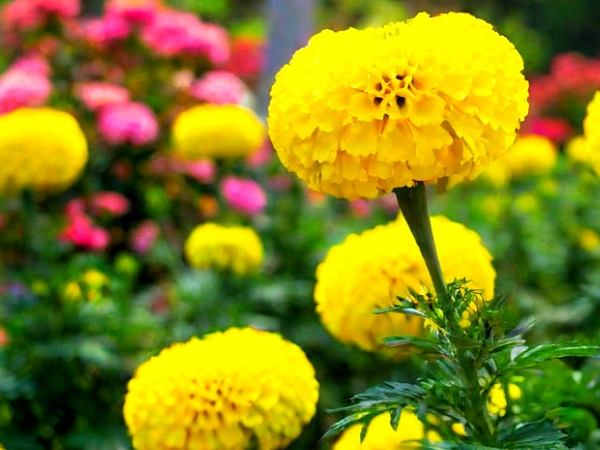Red Sandalwood Plant
[Pterocarpus Santalinus ]
Red Sandalwood: A Precious Legacy, Rooted in Tradition and Reverence
Introduction
NICKSGARDENS®: Cultivate a Timeless Treasure with Red Sandalwood
In the heart of India's Eastern Ghats, where ancient forests whisper tales of resilience and beauty, a majestic evergreen tree stands tall - the Red Sandalwood. Revered for its fragrant heartwood, this iconic tree, known scientifically as Pterocarpus santalinus, embodies a legacy of cultural significance, economic value, and ecological importance.
Its deep red heartwood, prized for centuries, has been used to craft everything from intricate carvings and religious artifacts to medicinal preparations and cosmetics. Beyond its commercial value, the Red Sandalwood, or "Rakta Chandana," holds a special place in Indian hearts, symbolizing luxury, spirituality, and healing.
Let's explore the multifaceted world of Red Sandalwood, uncovering its botanical secrets, cultural significance, and the sustainable practices that safeguard its future.

Botanical Name: Pterocarpus santalinus
Common Names: Red Sandalwood, Rakta Chandana (India), Red Sanders, Saunderswood
Family: Fabaceae (Legume family)
Origin: Endemic to the Eastern Ghats of India, specifically in the states of Andhra Pradesh, Karnataka, and Tamil Nadu
Invasive Species Status: The Red Sandalwood is not considered invasive. However, due to its high demand and illegal logging, it is classified as an endangered species. Sustainable cultivation and conservation efforts are crucial to protect this precious resource.
Appearance:
◦ The Red Sandalwood tree is a medium-sized evergreen, reaching a height of up to 10-15 meters.
◦ Its bark is dark brown or reddish-brown, often fissured and flaky.
◦ The leaves are compound, with 3-5 leaflets that are ovate or elliptic in shape and have a smooth margin.
◦ The flowers are small, yellow, and fragrant, blooming in axillary or terminal panicles.
◦ The fruit is a flat, winged pod containing one or two seeds.
Growth Habit:
◦ The Red Sandalwood is a slow-growing tree, taking several years to mature and produce heartwood.
◦ It thrives in dry, deciduous forests with well-drained soil and plenty of sunlight.
◦ The tree is known for its deep root system, which helps it withstand drought conditions.
Climate: The Red Sandalwood is best suited to tropical and subtropical climates with distinct dry and wet seasons. It prefers warm temperatures and moderate humidity.
Soil Type: The ideal soil for Red Sandalwood cultivation is well-drained, loamy soil with a slightly acidic to neutral pH (6.0-7.0). It can also tolerate rocky or gravelly soils.
Sunlight: Red Sandalwood requires full sun for optimal growth and heartwood development. Aim for at least 6-8 hours of direct sunlight per day.
Temperature: The Red Sandalwood thrives in warm temperatures between 20-35°C (68-95°F). It can tolerate some frost but is sensitive to prolonged cold temperatures.
Humidity: While the Red Sandalwood can tolerate moderate humidity levels, it is well-adapted to dry climates.
Planting:
◦ Red Sandalwood is typically propagated from seeds.
◦ Soak the seeds in water for 24 hours before sowing them in seed trays or pots filled with well-draining potting mix.
◦ Keep the soil moist but not waterlogged.
◦ Transplant the seedlings to their permanent location once they reach a height of about 15-20 cm.
◦ Choose a sunny location with well-drained soil.
◦ Prepare the planting hole by digging it twice the size of the root ball and amending the soil with compost or well-rotted manure.
◦ Plant the seedling at the same depth it was growing in the container.
◦ Backfill the hole with soil, firming it gently around the base of the plant.
◦ Water thoroughly after planting.
Watering: Water your Red Sandalwood tree regularly, especially during the first few years after planting and during hot and dry periods. Once established, it is relatively drought-tolerant.
Fertilizing: Fertilize your Red Sandalwood tree once or twice a year with a balanced organic fertilizer. You can also apply a layer of compost or well-rotted manure around the base of the tree.
Pruning and Training: Red Sandalwood requires minimal pruning. However, you can prune in the early years to shape the tree or remove any dead or diseased branches.
Pests and Diseases: Red Sandalwood is relatively pest and disease resistant. However, keep an eye out for leaf spot, powdery mildew, and stem borers. If problems arise, consider organic pest control methods or consult with a gardening expert.
Backyards: Red Sandalwood trees can be grown in backyards, provided they have ample space to mature and receive full sun.
Farms and Plantations: Red Sandalwood is often cultivated on farms and plantations for its valuable heartwood.
Reforestation Projects: Due to its ecological importance and endangered status, Red Sandalwood is often included in reforestation projects.
Economic Value: The heartwood of the Red Sandalwood tree is highly prized for its fragrance, color, and durability. It is used in a variety of industries, including perfumery, cosmetics, pharmaceuticals, and furniture making. It is particularly valued in China and Japan for crafting musical instruments and intricate carvings.
Cultural Significance: Red Sandalwood holds deep cultural and religious significance in India. It is used in traditional ceremonies, rituals, and Ayurvedic medicine. Its cultural importance extends to China and Japan, where it is associated with luxury and artistry.
Medicinal Properties: Red Sandalwood is believed to possess various medicinal properties, including anti-inflammatory, anti-microbial, and anti-aging effects. It is used in Ayurvedic medicine to treat a variety of ailments, including skin diseases, fever, and digestive issues.
Environmental Benefits: Red Sandalwood trees play a crucial role in the ecosystem, providing habitat for wildlife and helping to prevent soil erosion.
Ornamental Value: While primarily valued for its heartwood, the Red Sandalwood tree also possesses ornamental value with its attractive foliage and fragrant flowers.
Beneficial Companions: Red Sandalwood trees can benefit from growing alongside nitrogen-fixing plants like legumes, which help enrich the soil.
Plants to Avoid: Avoid planting Red Sandalwood near trees or shrubs with aggressive root systems, as they may compete for resources.
NICKSGARDENS® Red Sandalwood Plants: We cultivate Red Sandalwood saplings, promoting sustainable cultivation and conservation efforts. Availability depends on the time of the year.
NICKSGARDENS® Complete Food Supplement For Red Sandalwood Plants: Nourish your Red Sandalwood trees with our specially formulated fertilizer, supporting healthy growth and development. Contact us for more details
Conclusion
The Red Sandalwood tree is a precious legacy, embodying cultural heritage, economic value, and ecological importance. Its fragrant heartwood, medicinal properties, and ornamental beauty make it a truly exceptional tree, cherished not only in India but also in China and Japan.
By cultivating Red Sandalwood responsibly and sustainably, we can preserve this valuable resource for generations to come. Let NICKSGARDENS® guide you on this journey of conservation and cultivate a greener, more sustainable future.
About NICKSGARDENS®
Ready to cultivate a timeless treasure in your garden? Explore the world of Red Sandalwood and discover the beauty and benefits of this remarkable tree. Visit our shop at Nicksgardens.com and let NICKSGARDENS® be your partner in sustainable cultivation and conservation.
Need expert advice on growing Red Sandalwood or addressing specific challenges in your garden? Call An Expert today![Link]



